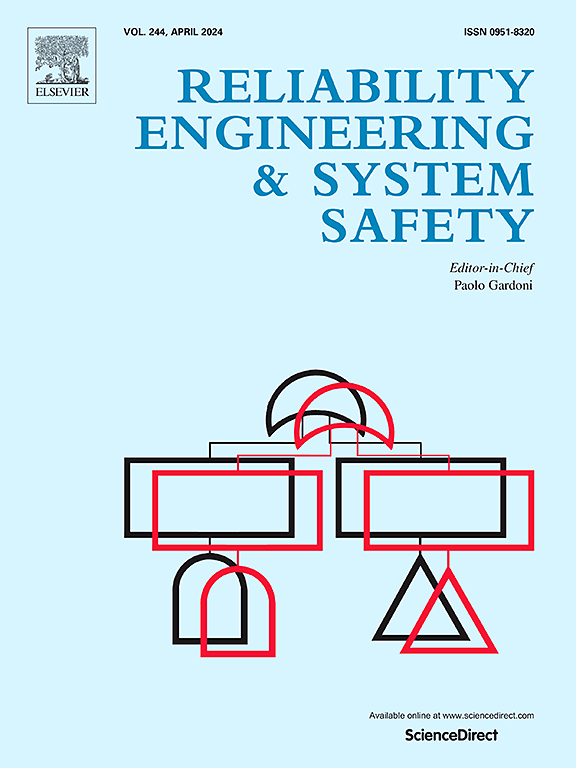Rapid uncertainty quantification for structural full-field dynamic responses with extremely high dimension
IF 9.4
1区 工程技术
Q1 ENGINEERING, INDUSTRIAL
引用次数: 0
Abstract
Conducting a full-field dynamic analysis under structural uncertainties is of great significance for a better understanding of structural mechanics behavior and obtaining structural reliability. However, the full-field dynamic response of structures is of extremely high dimensionality, and traditional uncertainty quantification (UQ) methods may face challenges such as modeling difficulties and low analysis efficiency. To address these issues, this paper proposes a rapid UQ analysis method for the structural full-field responses with extremely high dimension. This method first decouples the ultra-high dimensional full-field response based on modal analysis and further extracts features of the responses based on manifold learning techniques, effectively reducing the dimensionality of the response to be analyzed. Subsequently, by introducing the optimal sparse polynomial chaos expansion technique, an efficient UQ analysis model from structural uncertainty parameters to response is constructed. Three numerical examples are provided to demonstrate the accuracy of the proposed method. Throughout the entire UQ analysis process, only a small amount of low-dimensional features need to be analyzed, and the final UQ accuracy of the full-field dynamic response can be effectively guaranteed. Therefore, the proposed method provides an effective tool for rapid UQ analysis of structural full-field dynamic responses.

超高维结构全场动力响应的快速不确定度量化
进行结构不确定性下的全场动力分析,对于更好地理解结构力学行为和获得结构可靠度具有重要意义。然而,结构的全场动力响应具有极高的维数,传统的不确定性量化方法存在建模困难、分析效率低等问题。针对这些问题,本文提出了一种用于超高维结构全场响应的快速UQ分析方法。该方法首先基于模态分析对超高维全场响应进行解耦,然后基于流形学习技术进一步提取响应特征,有效地降低了被分析响应的维数。随后,通过引入最优稀疏多项式混沌展开技术,构建了从结构不确定性参数到响应的高效UQ分析模型。最后给出了三个数值算例,验证了所提方法的准确性。在整个UQ分析过程中,只需要分析少量的低维特征,就能有效保证最终的全场动态响应UQ精度。因此,该方法为结构全场动力响应的快速UQ分析提供了有效的工具。
本文章由计算机程序翻译,如有差异,请以英文原文为准。
求助全文
约1分钟内获得全文
求助全文
来源期刊

Reliability Engineering & System Safety
管理科学-工程:工业
CiteScore
15.20
自引率
39.50%
发文量
621
审稿时长
67 days
期刊介绍:
Elsevier publishes Reliability Engineering & System Safety in association with the European Safety and Reliability Association and the Safety Engineering and Risk Analysis Division. The international journal is devoted to developing and applying methods to enhance the safety and reliability of complex technological systems, like nuclear power plants, chemical plants, hazardous waste facilities, space systems, offshore and maritime systems, transportation systems, constructed infrastructure, and manufacturing plants. The journal normally publishes only articles that involve the analysis of substantive problems related to the reliability of complex systems or present techniques and/or theoretical results that have a discernable relationship to the solution of such problems. An important aim is to balance academic material and practical applications.
 求助内容:
求助内容: 应助结果提醒方式:
应助结果提醒方式:


